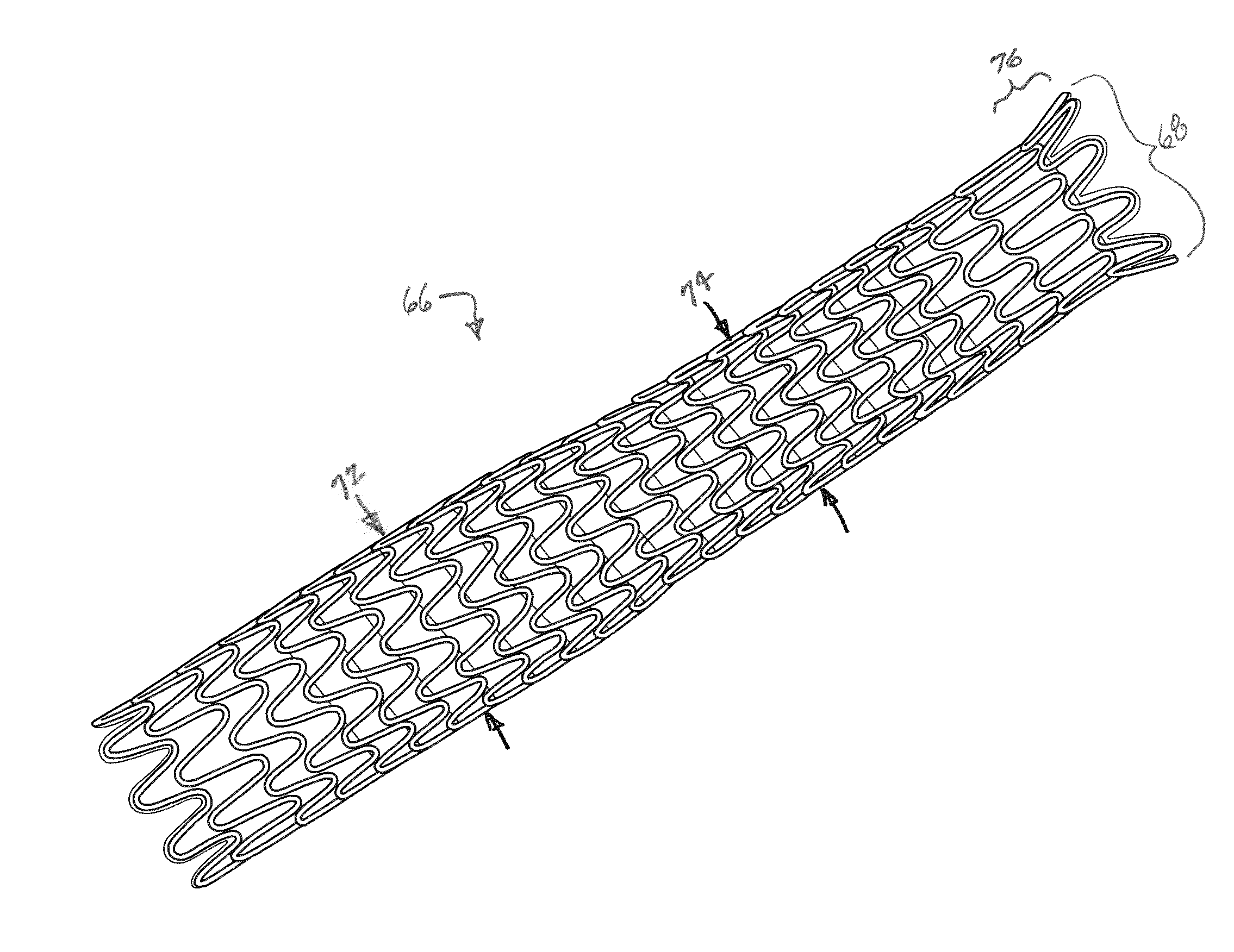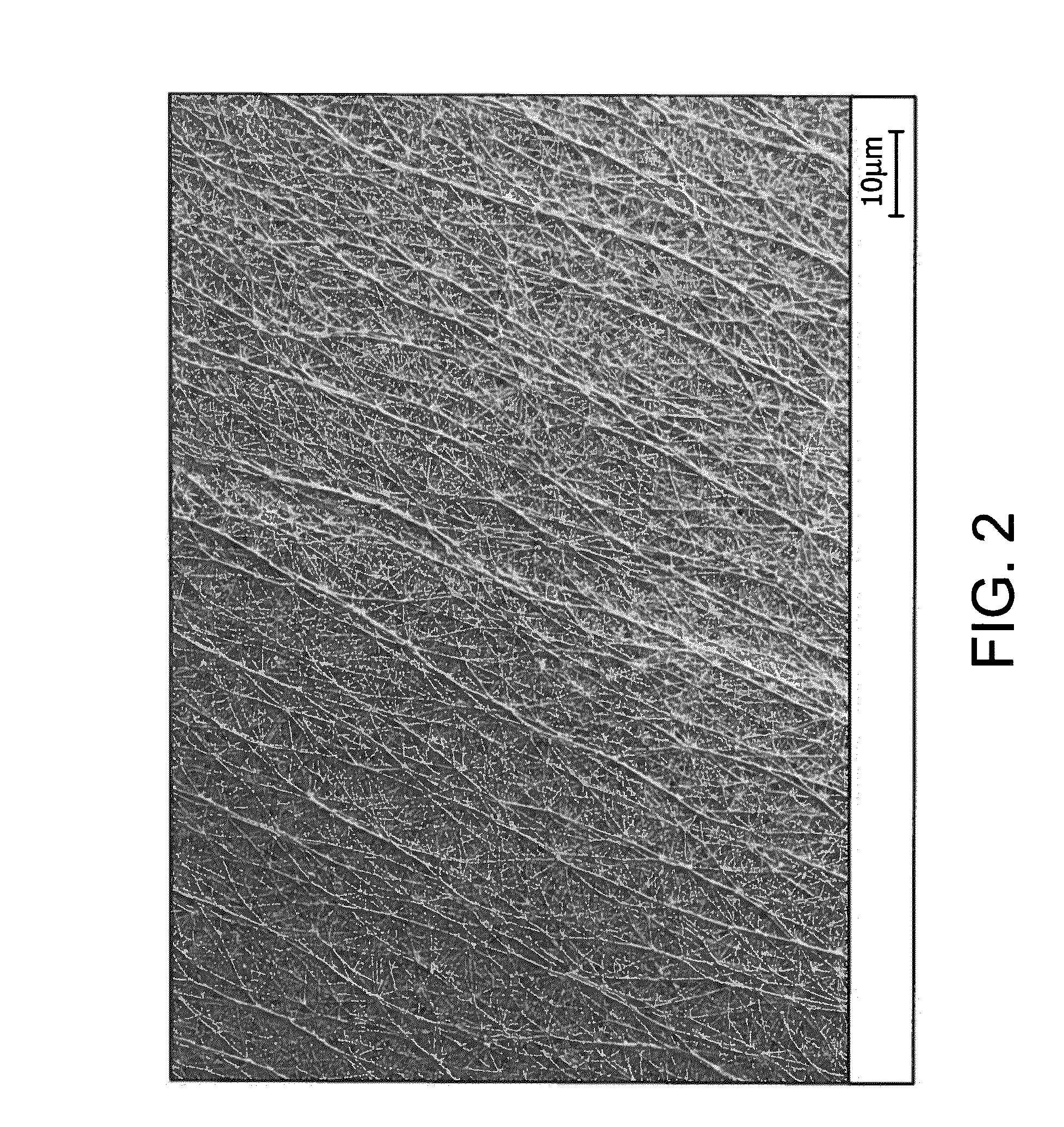Self-expanding, balloon expandable stent-grafts
- Summary
- Abstract
- Description
- Claims
- Application Information
AI Technical Summary
Benefits of technology
Problems solved by technology
Method used
Image
Examples
example 1
Diametrically Adjustable Vascular Graft
[0055]The following is a description of a method used to make a diametrically extensible vascular graft that may be increased in diameter by inflation of a catheter balloon placed temporarily within the lumen of the vascular graft. The method described for making of the balloon extensible vascular graft is similar to a method described below for making of a balloon extensible stent-graft. The example of the vascular graft described herein was made to be diametrically extensible from a 4 mm inside diameter to a 6 mm inside diameter; larger ranges of extensibility are possible. A flow chart summary of this manufacturing process is described by FIG. 11.
[0056]First, a longitudinally extruded and expanded ePTFE tube was obtained, the tube having a 6 mm inside diameter, 15 cm length, 0.6 mm wall thickness and approximate 22 micron mean fibril length. This tube was fitted over a 6 mm outside diameter (OD) stainless steel mandrel. The tube was then pro...
example 2
Self Expanding / Balloon Adjustable Stent-Graft
[0063]A 4 mm covered stent-graft with a self-expanding nitinol wire stent (a helically wound serpentine wire form) that can be subsequently extended in diameter (e.g., with a catheter balloon) to 6 mm was made as described below; this stent-graft is illustrated in FIG. 1 which shows a portion of the stent-graft having been balloon expanded to an ID of 6 mm.
[0064]An ePTFE tube was obtained, the tube having a 6 mm ID, about 8 cm length, bulk density of about 0.6 g / cc, 0.1 mm wall thickness and approximate 22 micron mean fibril length. This tube was fitted over a 6 mm OD stainless steel mandrel, then wrapped with FEP-coated ePTFE film and heated as described above for the example of the diametrically extensible vascular graft. The graft was then removed from the 6 mm OD stainless steel mandrel. An ePTFE sacrificial cushion tube as described previously was fitted onto a 6 mm OD porous stainless steel mandrel, after which the film-wrapped ePTF...
example 3
Length Adjustable Vascular Graft
[0075]A length adjustable 6 mm vascular graft was produced by making an about 25 cm long vascular graft in the method described above for the diametrically extensible graft. The graft was then placed on a 6 mm stainless steel mandrel, and then compressed longitudinally to a length of about 7.5 cm, or about 30% of its original length. In the process, the fibrils in the graft including the fibrils of the film become bent. The graft on the mandrel was placed in a 320° C. convection oven for 10 minutes. During this process the FEP on the film of the graft was melted and flows into the void spaces between the bent fibrils. After removal from the oven and cooling to about ambient temperature, the graft was removed from the mandrel. The length of the graft thus shortened was about 50% less than the original length. The FEP mingled with the bent fibrils retains the graft in its shortened length until it was manually extended by the application of a tensile fo...
PUM
| Property | Measurement | Unit |
|---|---|---|
| Diameter | aaaaa | aaaaa |
| Expansion enthalpy | aaaaa | aaaaa |
Abstract
Description
Claims
Application Information
 Login to View More
Login to View More - R&D
- Intellectual Property
- Life Sciences
- Materials
- Tech Scout
- Unparalleled Data Quality
- Higher Quality Content
- 60% Fewer Hallucinations
Browse by: Latest US Patents, China's latest patents, Technical Efficacy Thesaurus, Application Domain, Technology Topic, Popular Technical Reports.
© 2025 PatSnap. All rights reserved.Legal|Privacy policy|Modern Slavery Act Transparency Statement|Sitemap|About US| Contact US: help@patsnap.com



